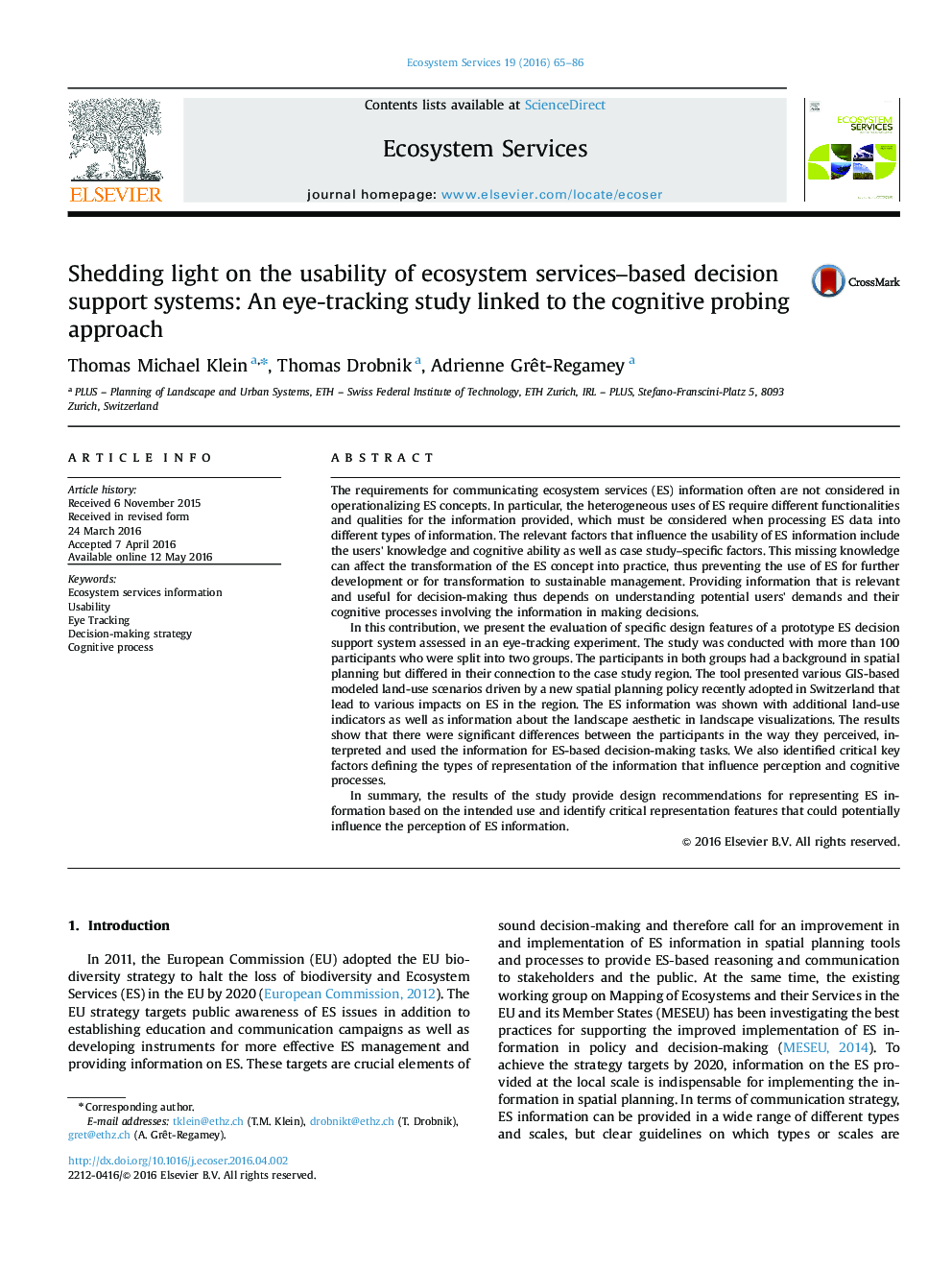| کد مقاله | کد نشریه | سال انتشار | مقاله انگلیسی | نسخه تمام متن |
|---|---|---|---|---|
| 108060 | 161838 | 2016 | 22 صفحه PDF | دانلود رایگان |
• Results of the study provide design recommendations for representing ES information.
• Types of representation of the information influence perception and cognitive processes.
• Participants interpreted and used the information for ES-based decision-making differently.
• Detail and scale between applied ES information and reasoning is correlating.
The requirements for communicating ecosystem services (ES) information often are not considered in operationalizing ES concepts. In particular, the heterogeneous uses of ES require different functionalities and qualities for the information provided, which must be considered when processing ES data into different types of information. The relevant factors that influence the usability of ES information include the users’ knowledge and cognitive ability as well as case study–specific factors. This missing knowledge can affect the transformation of the ES concept into practice, thus preventing the use of ES for further development or for transformation to sustainable management. Providing information that is relevant and useful for decision-making thus depends on understanding potential users’ demands and their cognitive processes involving the information in making decisions.In this contribution, we present the evaluation of specific design features of a prototype ES decision support system assessed in an eye-tracking experiment. The study was conducted with more than 100 participants who were split into two groups. The participants in both groups had a background in spatial planning but differed in their connection to the case study region. The tool presented various GIS-based modeled land-use scenarios driven by a new spatial planning policy recently adopted in Switzerland that lead to various impacts on ES in the region. The ES information was shown with additional land-use indicators as well as information about the landscape aesthetic in landscape visualizations. The results show that there were significant differences between the participants in the way they perceived, interpreted and used the information for ES-based decision-making tasks. We also identified critical key factors defining the types of representation of the information that influence perception and cognitive processes.In summary, the results of the study provide design recommendations for representing ES information based on the intended use and identify critical representation features that could potentially influence the perception of ES information.
Figure optionsDownload as PowerPoint slide
Journal: Ecosystem Services - Volume 19, June 2016, Pages 65–86
